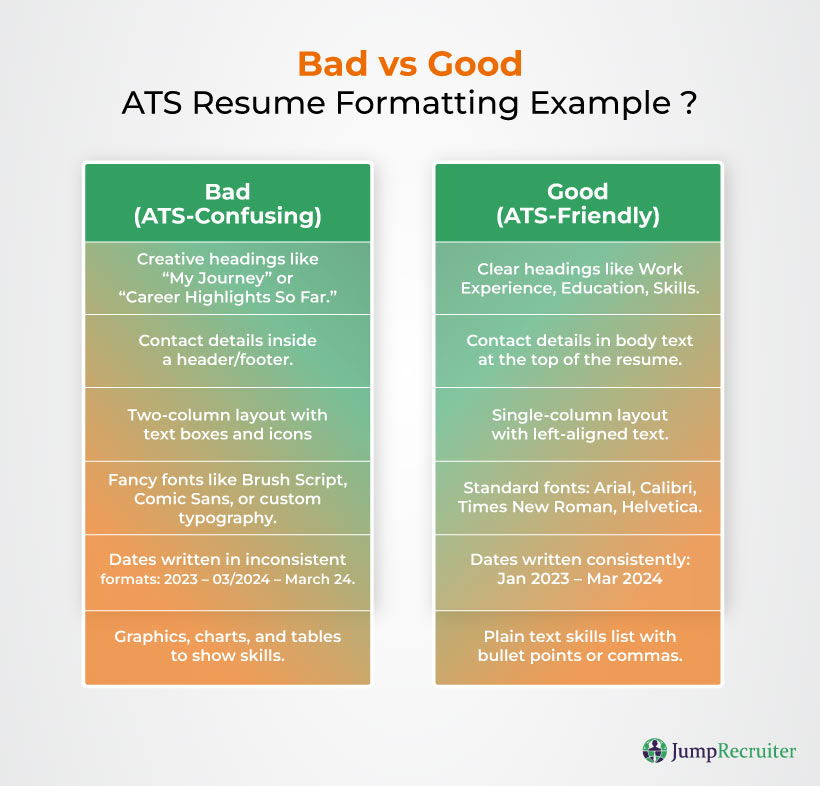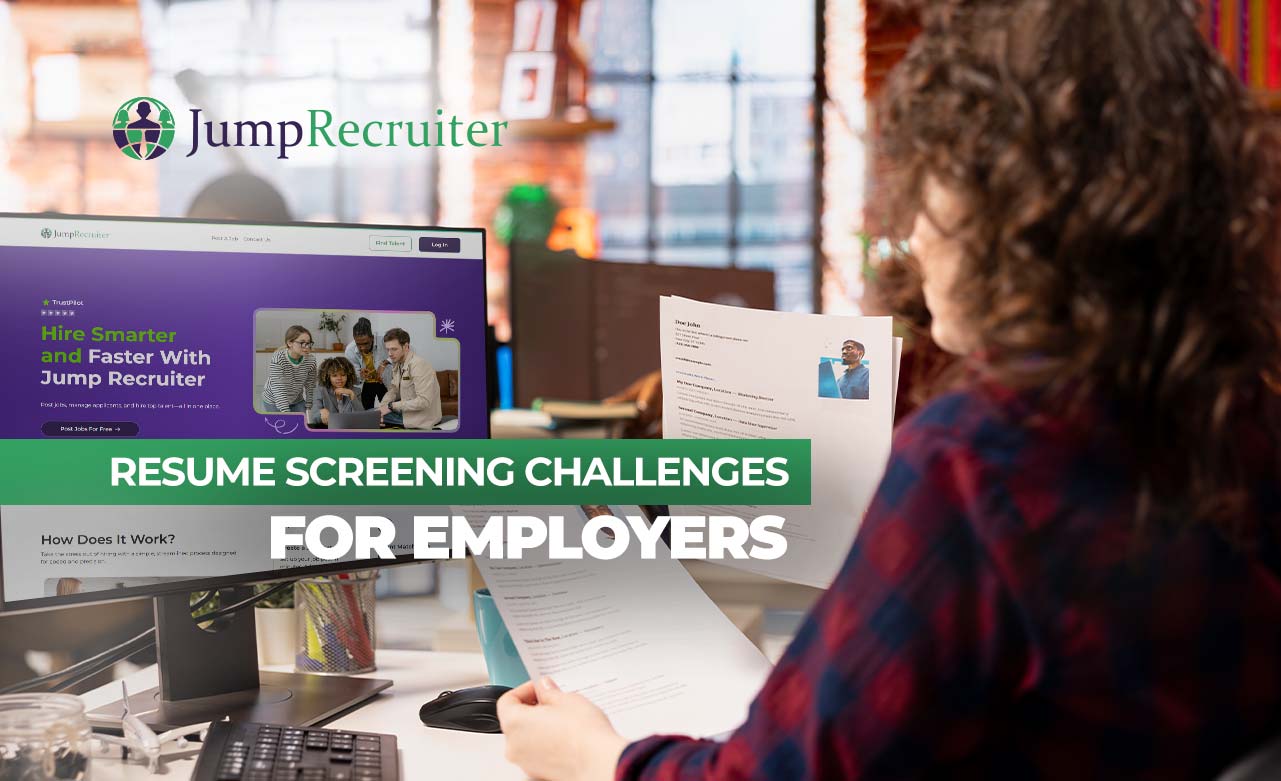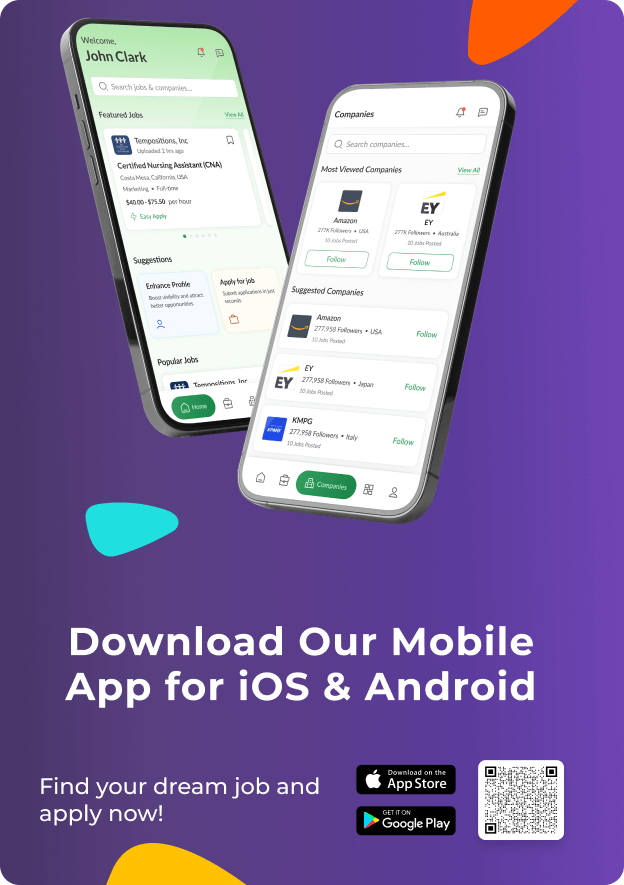“If a resume falls into an online job portal and no recruiter sees it, did it ever exist?”
For many job seekers, the answer is NO.
The truth is, most resumes never reach human eyes. They’re first scanned by an Applicant Tracking System (ATS) software, which decides which resumes to forward and which to filter out.
That means even qualified candidates can miss out, not because they lack skills, but because their resume wasn’t ATS-friendly.
This guide will show you how to make that change. You’ll learn how to format your resume correctly, choose the right keywords, and pass the ATS scan — so real people can finally see your experience and invite you to interview.
What Is an ATS and Why Must You Write Your Resume for It
Think of an ATS as the first “recruiter” your resume ever meets — except it’s a machine. An ATS, or Applicant Tracking System, is software that helps companies manage job applications.
Here’s what happens when you click “Apply”:
- Your resume is uploaded into the company’s ATS.
- The system scans it line by line.
- It examines the keywords that match the job description.
- It scores your resume based on relevance.
- Only the top-scoring resumes are reviewed by a human.
This process saves recruiters hours of work, particularly when hundreds of applicants apply for a single job.
But here’s the catch, if your resume is formatted poorly, missing keywords, or hard for the ATS to read, it can get lost.
Why This Matters to You
ATS is everywhere. Almost every medium to large company uses it.
It decides first impressions. The ATS decides if you even make the first cut.
You can beat it. Once you know how it works, you can write a resume that gets through.
Think of it like preparing for airport security. If your bag has the wrong items, you get stopped. If it’s packed right, you pass quickly and reach the gate. Your resume works the same way — format it right, and you get through to the recruiter.
Jump Recruiter helps make that journey easier. By connecting your ATS-ready resume directly with recruiters who are actively looking for talent, it ensures your carefully prepared application doesn’t get lost in the system.
How an ATS Reads Your Resume? Upload ➝ Scan ➝ Keyword Match ➝ Score ➝ Shortlist ➝ Recruiter Review
Top 6 ATS Resume Formatting Rules
Your resume is a data file first. Before a recruiter reads it, an ATS must be able to scan and understand it. That’s why formatting matters as much as what you write.
An ATS reads resumes line by line, looking for key information like job titles, dates, and skills. If your resume has complex layouts, images, or non-standard sections, the software may misread it — or skip parts entirely.
The goal is straightforward: to make your resume look professional while remaining machine-readable.
Think of it like writing for two audiences: a computer first, then a human recruiter.
According to a study by the University of Illinois at Chicago, optimizing your resume for ATS involves using standard fonts, avoiding complex formatting, and incorporating relevant keywords into your resume.
Format your resume according to these proven rules to increase your chances of getting through the ATS gate:
1. Use the Right File Type
The first step is getting your resume past the upload stage. Most modern ATS handles .doc or .docx files perfectly. PDFs can also work, but only if the job posting explicitly states that they accept PDFs. Older ATSs sometimes fail to extract text from PDFs, leaving your resume blank in the system.
Avoid submitting images, scans, or links — they cannot be parsed and will be rejected automatically.
2. Stick to Standard Fonts
ATS relies on text recognition, so fancy fonts are risky. Choose clear, professional fonts such as Arial, Calibri, Helvetica, or Times New Roman. Keep the font size of the body text between 10 and 12 points and slightly larger for headings.
Readable fonts not only help ATS parsing but also improve the human recruiter’s experience.
3. Use Simple Layouts
Mostly, the complex designs look attractive and aesthetic, but they can also confuse the software. Stick to a single-column format so information flows in a straight line from top to bottom.
Avoid these design elements:
- Text boxes
- Tables
- Graphics
- Icons
Instead, always use plain text. Also, use the standard bullet points. This guarantees that all the ATS captures every word you write.
4. Keep Headings Standard
ATS looks for specific section titles. Use clear, widely recognized headings such as:
- Professional Summary
- Work Experience
- Education
- Skills
- Certifications
While creative titles like “What I Bring” or “My Journey” might sound personal, they can confuse the system — and your key details might never get matched.
5. Place Contact Details at the Top
Your name, phone number, and email should appear clearly at the top of the resume. Include your city, state, or country (if relevant) for location-based roles. Never hide contact details in headers, footers, or sidebars — some ATS tools do not read them.
6. Be Consistent with Dates
ATS reviews your work history by examining the dates. Pick one format and stick with it across your resume, for example:
- Jan 2023 – Mar 2024
- 01/2023 – 03/2024
Using the same style everywhere makes it easy for the system — and recruiters — to follow your career timeline.
If you want to save time and avoid formatting headaches, you can use Jump Resume Builder. It automatically formats your resume in an ATS-friendly way — single-column layout, clean headings, and machine-readable text. This lets you spend time crafting strong content, not struggling with formatting issues.
Bad vs Good: ATS Resume Formatting Example
Sometimes the easiest way to understand formatting is to see it. Here’s a quick side-by-side comparison of what trips up an ATS vs what works well.

Writing Content & Using Keywords That Get You Through Filters
Once your resume is formatted correctly, the next step is ensuring the right words are included in it. Remember — ATS software doesn’t “read” your resume the way a person does.
It scans for matches between your resume and the job description.
The more matches it finds, the higher your score — and the better your chance of getting shortlisted. Here’s how to choose and use keywords that work.
1. Read the Job Description Like a Recruiter
The job description is your cheat sheet. It tells you exactly which skills, tools, and titles the company values.
- Highlight hard skills (like Python, Excel, and Project Management).
- Note soft skills (like leadership, collaboration, communication).
- Look for certifications (PMP, CPA, AWS Certified).
- Capture the exact job title they use — if they say “Digital Marketing Specialist,” use that title if it fits your role.
According to a study published on ResearchGate, using standard fonts and simple formatting improves how ATS reads your resume. Adding the right keywords forward boosts the chances of getting shortlisted.
2. Use Keywords Naturally
Keyword stuffing doesn’t work. Your resume should read smoothly and look human-friendly.
Place keywords in:
- Professional Summary: Use 2–3 key skills early.
- Work Experience: Show how you applied those skills in real results.
- Skills Section: List them cleanly, separated by commas or bullets.
3. Include Both Abbreviations and Full Forms
ATS may search for “SEO” and “Search Engine Optimization.” Cover both so you don’t miss a match.
Example:
Enhanced SEO (Search Engine Optimization) strategy resulted in a 40% increase in traffic.
4. Show Results, Not Just Duties
Instead of writing job responsibilities only, show the impact you made. Numbers stand out in ATS and impress recruiters as well.
Bad: Managed social media accounts.
Good: Managed social media accounts, growing followers by 50% in six months.
ATS Resume Strategies for Gaps, Freelancing, and Switching Careers
Not every career path is a straight line. Many job seekers have gaps in their employment history, freelancing experience, or career transitions. The good news is that you can still create an ATS-friendly resume that clearly showcases your value.
1. Career Gaps
A gap doesn’t mean rejection — but you must show what you did during that time.
- List volunteer work, online courses, or certifications you completed.
- Include short-term projects or consulting work if relevant.
- Use a simple line like:
Career Break (Jan 2022 – Dec 2022) — Focused on professional development through the XYZ course.
This gives the ATS a date range to work with and reassures recruiters.
2. Freelance or Contract Work
ATS sometimes struggles when listing dozens of small jobs separately.
Instead:
- Group freelance work under one heading:
Freelance Graphic Designer (2019 – 2023)
- Then, use bullet points to describe the key projects and their results.
- Mention recognizable client names if possible.
3. Switching Industries or Careers
If you are changing fields, the ATS may miss your transferable skills unless you carefully rewrite them.
- Use a skills-based (hybrid) resume format where you list top skills first.
- Match keywords from the new industry’s job description.
- Highlight projects, coursework, or certifications showing your expertise.
Example:
Completed Google Data Analytics Certificate — applied skills to a personal project analyzing sales data trends.
If you’re unsure how to format your resume for a career switch, Jump Resume Builder can help. It offers industry-specific templates that are already ATS-friendly — perfect for highlighting transferable skills and relevant keywords in a way recruiters expect. You can create your free resume in minutes and ensure it’s tailored to your new field.
4. Non-Traditional Experience
Internships, unpaid work, side hustles — all can count. Just list them like jobs:
- Job Title (Intern, Volunteer, Project Lead)
- Organization or Project Name
- Date Range
- Key Achievements (use metrics if possible)
Jump Recruiter helps make sure all that effort pays off. Once your ATS-friendly resume is ready, the platform connects it with recruiters who are actively searching for candidates with diverse experiences — giving your unique career path the attention it deserves.
Practical Tip: ATS cares about structure more than prestige. As long as dates, titles, and keywords are clear, your experience can still score well — even if your path is unconventional.
7 Common ATS Resume Mistakes and How to Avoid Them
Even qualified candidates get filtered out because of small, avoidable mistakes. The ATS doesn’t guess what you mean — it follows strict rules. One wrong move, and key details might never be seen.
Here are the most common errors and what to do instead:
1. Using Graphics or Images
ATS can’t read text inside images, logos, or charts. A skill bar or icon that looks nice to you may appear as blank space to the software.
Do This Instead: List skills and achievements as text with bullet points.
2. Fancy or Multi-Column Layouts
Two-column designs often break when the ATS reads them, resulting in a mix-up of job titles, dates, and descriptions.
Do This Instead: Stick to a single-column layout with clear headings and left-aligned text.
3. Putting Contact Info in Headers or Footers
Some ATS systems skip headers and footers altogether. That means your name or phone number might not even get stored.
Do This Instead: Place all contact info in the main body at the top of your resume.
4. Keep Your Dates Uniform
Mixing different date styles across your resume can confuse ATS software and make your work history look messy.
Do This Instead: Choose one format and stick with it from start to finish — for example:
Jan 2023 – Mar 2024 OR 01/2023 – 03/2024
5. Overusing Acronyms or Jargon
ATS may not recognize internal company terms or uncommon abbreviations.
Do This Instead: Write the full form first, then the acronym in brackets.
Example: Customer Relationship Management (CRM) software.
6. Keyword Stuffing
Repeating the same skill too many times can make your resume look fake and hard to read.
Do This Instead: Use keywords naturally — in your summary, skills list, and work experience — but focus on results.
7. Saving in the Wrong File Type
Submitting a scanned image or Google Doc link often leads to parsing failures.
Do This Instead: Save your resume as a .docx file, or PDF if allowed.
Pro Tip: Before you submit, copy your resume text into a plain text document. If the spacing, headings, and dates still look clean, your resume will likely pass ATS parsing.
How to Test and Validate Your ATS-Friendly Resume
You’ve formatted your resume and added the right keywords — but how do you know it will actually pass the ATS scan? Testing your resume before applying saves time, frustration, and missed opportunities. Here’s how to make sure your resume is truly ATS-ready.
1. Run a Resume Scan
Use an ATS scan tool to verify that your resume aligns with the job description.
These tools indicate which keywords are missing, if formatting is broken, and how well your resume aligns with the posting. If your platform allows, scan each new version of your resume before sending it out.
2. Try the Simple Text Check
Open a plain text editor, such as Notepad, and paste your resume into it. Look at how it appears:
- Is your name and contact info at the top?
- Are headings in the correct order?
- Do dates and job titles line up?
As long as the layout is tidy and nothing is out of place, your resume should be accurately read by an ATS.
3. Tailor for Each Job
A single resume for every job rarely works. Tailor your resume each time by: Using keywords directly from the job description and highlighting the most relevant skills first. Adjust your summary to reflect the role you’re applying for.
4. Get Human Feedback
ATS testing is critical — but don’t forget the recruiter’s eye. Share your resume with a friend, mentor, or recruiter. Ask: Is it easy to read quickly? Are achievements clear and measurable? Does the layout feel professional?
ATS Myths vs Reality: What Job Seekers Need to Know
There’s a lot of noise out there about ATS. Some of it is true — some of it just scares job seekers for no reason. Let’s separate fact from fiction so you can focus on what really matters.
Myth 1: “ATS Rejects 75% of Resumes Automatically.”
Reality:
ATS doesn’t “reject” you — it organizes data.
If a resume doesn’t match the job well, it simply ranks lower.
That’s why keyword alignment and clean formatting matter so much.
Myth 2: “You Need Fancy Templates to Beat the ATS.”
Reality:
Fancy templates can hurt more than help.
ATS reads simple, structured text best.
A clean, professional layout always wins over overly designed ones.
Myth 3: “If You Don’t Have Every Keyword, You’re Out.”
Reality:
You don’t need a perfect 100% match.
Focus on the most important skills, tools, and qualifications.
Recruiters will still review a strong resume even if one or two keywords are missing.
Myth 4: “ATS Is Just a Gatekeeper — Humans Never See Your Resume.”
Reality:
Recruiters use ATS to filter resumes, not replace them.
Once your resume makes the list, a real person will read it.
Your goal is to make sure your experience is clear enough to reach that stage.
Myth 5: “ATS Can’t Read PDFs.”
Reality:
Most modern ATS systems read PDFs just fine — if they’re text-based.
Problems only happen with scanned images or locked files.
Always check the job posting for preferred format before sending.
💡 Reality Check: ATS isn’t a villain — it’s your secret ally. Think of it as the helpful librarian who puts your resume on the right shelf so recruiters find it first.
Where Jump Recruiter Gets You Seen
Remember how we started — “If a resume falls into an online portal and no recruiter sees it, did it ever exist?” Now yours does.
Every formatting choice, every carefully placed keyword, and every polished section make your resume more than just a document — it’s a signal. A signal that tells the right people: Here’s a candidate worth seeing.
Jump Recruiter ensures that the signal reaches its intended destination. Your resume is not just passing the ATS software, it’s landing in front of recruiters actively looking for talent like yours.
Your next opportunity isn’t waiting in a black hole anymore. It’s on the table, ready for you to claim. Submit your profile today and let Jump Recruiter put your experience where it belongs: front and center.







